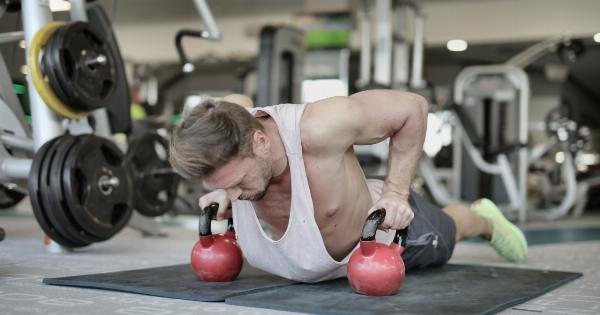Warm-ups are an essential part of any exercise routine, yet they are often overlooked or rushed through. Many people underestimate the importance of warming up before a workout, unaware of the numerous benefits it provides.
In this article, we will explore why warm-ups matter and the five key changes they bring about in our bodies.
The Importance of Warm-Ups
Before delving into the specific changes that warm-ups bring about, it is crucial to understand why warm-ups are necessary in the first place. Warm-ups serve two primary purposes:.
1. Increasing Blood Flow
When we engage in physical activity, our muscles require a steady supply of oxygen and nutrients to perform optimally. By gradually increasing our heart rate and circulation through a warm-up, we ensure that our muscles receive the necessary blood flow.
This increased blood flow helps deliver oxygen and nutrients more efficiently, reducing the risk of injury and enhancing performance.
2. Preparing the Muscles and Joints
Another essential aspect of warm-ups is preparing the muscles and joints for the upcoming activity. When we warm up, our body temperature rises, promoting greater elasticity in our muscles and tendons.
This improved flexibility reduces the likelihood of strains, pulls, and muscle tears during exercise. Additionally, warm-ups lubricate our joints, enhancing their range of motion and reducing stiffness.
The 5 Changes Brought About by Warm-Ups
Now that we understand the significance of warm-ups let’s explore the five specific changes they bring about in our bodies:.
1. Increased Heart Rate
One of the immediate changes that occur during a warm-up is an increased heart rate. As we engage in light aerobic activities like jogging, jumping jacks, or cycling, our heart rate gradually rises.
This elevation in heart rate prepares our cardiovascular system for the upcoming demands of exercise and improves its efficiency.
2. Improved Blood Circulation
With an increased heart rate comes improved blood circulation throughout the body. As blood vessels dilate, blood flow to the muscles and organs increases, delivering oxygen and nutrients more effectively.
This enhanced blood circulation aids in fueling the muscles and removing waste products, improving performance and reducing the risk of muscle fatigue.
3. Increased Muscle Temperature
By engaging in a warm-up, our muscle temperature rises, which is beneficial for several reasons. Firstly, warm muscles contract and relax more efficiently, resulting in improved performance.
Secondly, elevated muscle temperature reduces the viscosity of joint fluids, allowing for smoother joint movement and decreasing the risk of injury.
4. Enhanced Flexibility and Range of Motion
One of the noticeable changes brought about by warm-ups is increased flexibility and range of motion. As our body temperature rises, our muscles become more pliable, making it easier to stretch and perform dynamic movements.
This increased flexibility reduces the risk of muscle strains and improves overall athletic performance.
5. Mental Preparation
Lastly, warm-ups play a crucial role in preparing us mentally for the upcoming exercise. During a warm-up, our focus shifts from the external distractions of daily life to the task at hand.
We mentally prepare ourselves for the physical exertion, enhancing our concentration and improving the mind-body connection.





























